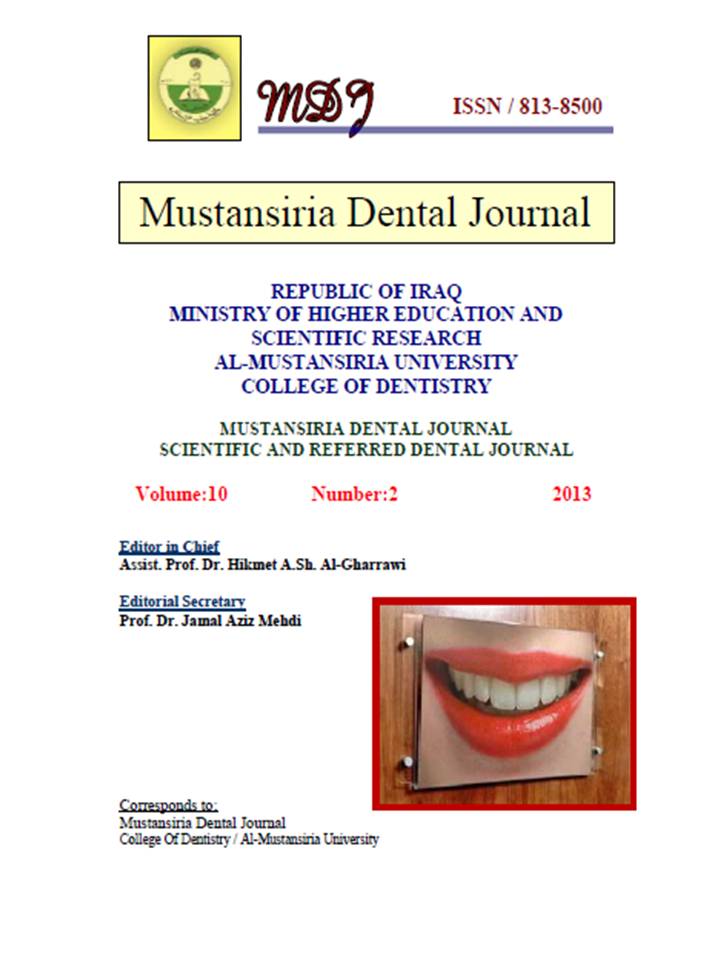Evaluation of the shear bond strengths between two alternative metal alloys and porcelain
DOI:
https://doi.org/10.32828/mdj.v10i2.207Abstract
The success of metal-ceramic restorations is influenced by the compatibility
between base metal alloys and porcelains. Although porcelain manufacturers
recommend their own metal systems as the most compatible for fabricating metalceramic
prostheses, a number of alloys have been used. The purpose of this study was
to evaluate the bond strength of CoCr alloy (Wironbond C) and NiCr alloy (Wiron 99)
using shear forces at the metal-ceramic interface. A stainless steel cylindrical matrix
was used for preparation of the metal dies, application of ceramic and to perform the
shear tests. Ten metal dies of each alloy were made for each alloy, and the metallic
portion was obtained with the lost wax casting technique with standardized waxing of
6.5mm of height and of 6mm of diameter. The ceramic was applied according to the
manufacturer’s recommendations with the aid of a Teflon matrix that allowed its
dimension to be standardized in the same size as the metallic portion, and shear tests
were performed in a universal testing machine at a cross-head speed of 0.5mm/min.
The mean shear bond strength values were 53.06MPa for Wirobond C alloy, with
standard deviation of 10.67, and 45.38MPa for Wiron 99, with standard deviation of
9.01. No statistically significant difference was observed between the shear strength
of the two metal-ceramic alloys.

Downloads
Published
Issue
Section
License
The Journal of Mustansiria Dental Journal is an open-access journal that all contents are free of charge. Articles of this journal are licensed under the terms of the Creative Commons Attribution International Public License CC-BY 4.0 (https://creativecommons.org/licenses/by/4.0/legalcode) that licensees are unrestrictly allowed to search, download, share, distribute, print, or link to the full texts of the articles, crawl them for indexing and reproduce any medium of the articles provided that they give the author(s) proper credits (citation). The journal allows the author(s) to retain the copyright of their published article.
Creative Commons-Attribution (BY)








